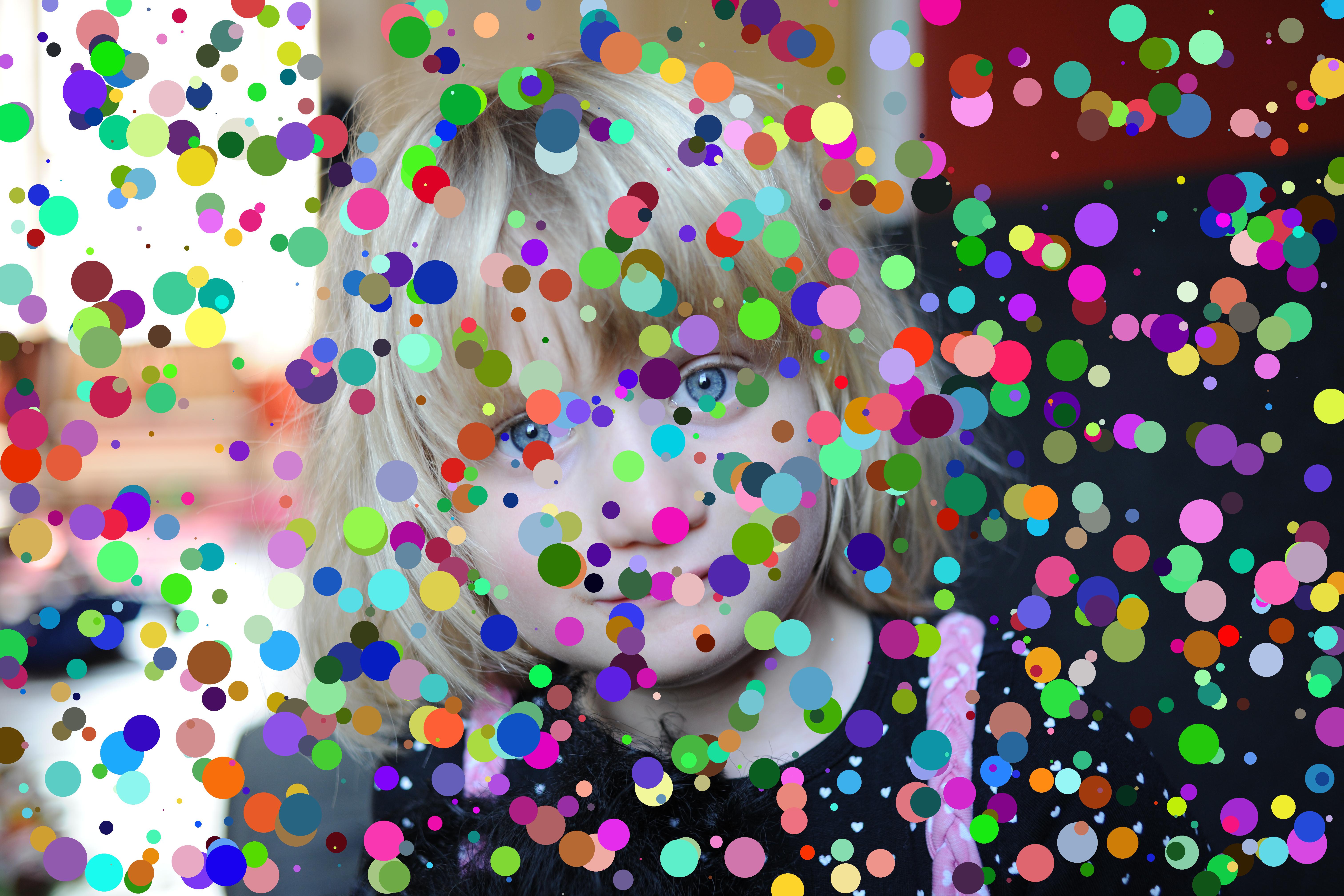ruby-vips is now at version 2.1 with a few useful bug fixes and an interesting
new mutate feature. This block makes it possible to modify images
efficiently and safely.
Draw operations
Up until now, ruby-vips has been purely functional, in other words, all operations created new images and no operations modified their arguments.
For example, you can draw a circle on an image, but you are given a new image back and the original is not changed:
y = x.draw_circle 255, 50, 50, 10, fill: true
This takes image x, makes a copy in memory, draws a circle with
centre at (50, 50) and radius 10 filled with pixels of value 255, and returns
this new image as y.
Purely functional operations have the huge advantage of allowing safe
sharing: if another part of your program is using the image referred to by
x, it won’t see a circle unexpectedly appear on its image.
All this copying and duplication is fine for small images, but can become very slow for large ones. And what if you want to draw a series of circles? It can become very painful indeed. For example:
#!/usr/bin/ruby
require 'vips'
x = Vips::Image.new_from_file ARGV[0]
1000.times do
x = x.draw_circle Array.new(3){rand(255)},
rand(x.width), rand(x.height), rand(100), fill: true
end
x.write_to_file ARGV[1]
I can run the program like this (nina.jpg is 6,000 x 4,000 pixels, not
unusual for modern DSLR camera):
$ /usr/bin/time -f %M:%e ./circles.rb ~/pics/nina.jpg x.jpg
4700668:13.29
To make this:

It works, but 13s and almost 5gb of memory to draw 1,000 circles is really not good.
Metadata
There’s a second case where mutability is important: metadata updates.
ruby-vips lets you set image metadata. For example, you can set the EXIF orientation tag on an image like this:
x = Vips::Image.new_from_file "k2.jpg"
x.set "orientation", 6
x.write_to_file "x.jpg"
It works in simple cases, but actually this is not correct. The x.set
is modifying image x (though only modifying the image metadata rather
than any pixels) and in a large program, x could be shared.
This can cause races and even crash.
To be safe, you need to make a private copy of the image before you change it, like this:
x = Vips::Image.new_from_file "k2.jpg"
x = x.copy
x.set "orientation", 6
x.write_to_file "x.jpg"
This is annoying, and worse than that, ruby-vips does not enforce this rule.
The mutate block
ruby-vips 2.1 has a new feature that
tries to fix both these problems: the mutate
method.
You use it like this:
#!/usr/bin/ruby
require 'vips'
x = Vips::Image.new_from_file ARGV[0]
x = x.mutate do |y|
1000.times do
y.draw_circle! Array.new(3) {rand(255)},
rand(x.width), rand(x.height), rand(100), fill: true
end
end
x.write_to_file ARGV[1]
The mutate method builds a private copy of the image,
uses it to construct an instance of a new class called
MutableImage,
and then yields that instance to the block.
An instance of MutableImage behaves just like an image object, except
that it is guaranteed not to be shared. There are new destructive versions
of operations like draw_circle (with the usual ! naming convention)
which really do modify their argument.
After the block finishes, mutate unwraps the mutable image and returns a
new Image object. Because it manages the transition to MutableImage and
back, ruby-vips can enforce all the obvious rules to guarantee run-time
safety.
Performance is much better because there’s only one allocate and copy. I see:
$ /usr/bin/time -f %M:%e ./circles-mutate.rb ~/pics/nina.jpg x.jpg
290348:1.04
It’s 13x faster and needs 15x less memory. It’s now fast enough that
operations like draw_circle! could actually be useful.
You can use mutate to safely modify image metadata too:
x = Vips::Image.new_from_file "k2.jpg"
x = x.mutate do |y|
y.set! "orientation", 6
y.remove! "icc-profile-data"
end
x.write_to_file "x.jpg"
For compatibility, the old set and remove methods are still there,
but we plan to make them start issuing warnings at some point.
The other libvips language bindings probably need a feature like this too, but for now it’s just ruby-vips.